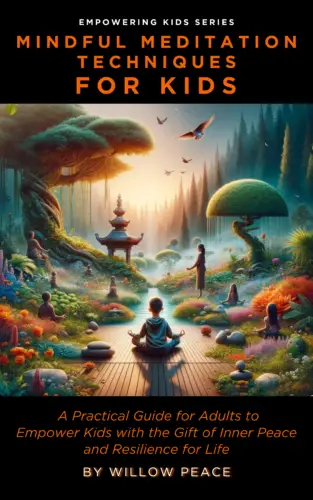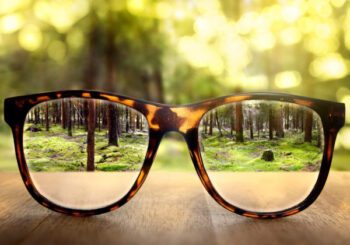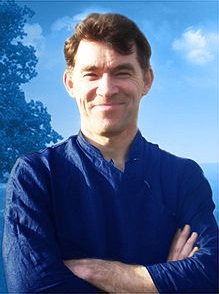Guest writer for Wake Up World
When I was 15 or 16 years old, I used to enjoy staring out of my bedroom window at night, at the sky and the gardens and other houses. After a few minutes of focused attention, I would always reach a point where my vision shifted. The clouds would suddenly look different, stranger and more real. They weren’t “clouds” anymore, but mysterious foaming shapes that floated through space. The houses weren’t “houses” anymore – they were strange geometric structures made up of jigsaw patterns of bricks.
It’s difficult to describe the shift in my vision, but it always felt exhilarating, as if I was seeing through to the heart of things, beneath a layer of familiarity.
I sometimes have a similar experience nowadays, after practising meditation. Sometimes, after a good meditation, it feels as if I’m looking at my surroundings with new eyes. Everything around me seems fresh and unfamiliar. I notice things that are always there but that I don’t normally pay attention to. “Wow! Did my shirt always have that pattern on it?” I ask myself. “Did my mug always have that image on it?” Colours seem brighter. Mundane things seem intricate and interesting. It’s as if an extra dimension of reality has been revealed.
A Veil of Familiarity
In fact, the above descriptions will probably be familiar to anyone who practises meditation. Perhaps they will also be familiar to people who have experimented with psychedelics.
In most situations, our perception is automatic. We see the world through a veil of familiarity, surrounded by objects and phenomena that we’ve perceived thousands of times before and don’t pay real attention to. In addition, we perceive the world through filters of concepts. We have a conceptual label (or name) for everything we see, and the label takes precedence over the thing in itself. We label floating foaming shapes as clouds; we label a massive variety of phantasmagoric natural forms with spreading roots and branches as trees. Of course, the words do not capture the reality of the phenomena themselves. Through filters of familiarity and concepts, our perception of the world becomes degraded, like a faded black-and-white image compared to a three-dimensional colour image.
This is why it always feels exhilarating to side-step our normal familiar perception and experience the “isness” of things. In fact, I think this is why people love to go on vacations. We like to put ourselves in unfamiliar environments, where our perception becomes fresh and real. Surrounded by unfamiliar sights and sounds, we experience reality more intensely.
Ineffable Suchness
In Buddhism, the term Tathat? – usually translated as “suchness” – is used to describe the naked reality of the world, beneath mental conceptions. Suchness is seen as ineffable, beyond language. Once it is perceived, there is no need to speak. Part of the purpose of meditation is to cultivate a fresh, non-automatic perception that enables us to perceive the suchness of things.
Under the influence of Zen Buddhism, Japanese artists and poets practised mitate – literally “to look again” or “see anew.” Artists aimed to perceive the world with fresh vision, free of concepts and expectations, looking at objects as if they had never seen before, or as if they were other things. The beauty of Japanese haiku poetry lies in its ability to depict suchness. Haiku are very short, usually consisting of three short phrases and 17 syllables, and simply describe moments of experience directly and clearly. For example, here is a well-known haiku from the 17th-century poet Basho: “The first snow/the leaves of the daffodil/bending together.”
The Heightened Awareness of Artists
Although it isn’t formulated in the same overt way, I think that suchness is very important to Western art too. To depict any experiences or scenes effectively, poets and artists have to transcend familiarity and find a new way of seeing. One can see this in the great still-life paintings of artists like Cezanne or Matisse. Familiar everyday objects like fruit and flowers and bottles are imbued with freshness and beauty.
The greatest painters had the ability to convey suchness in everything they saw. Vincent van Gogh is a perfect example., To look at paintings such as Sunflowers, Irises or Van Gogh’s Chair, is to see the naked isness of reality. In van Gogh’s paintings, objects seem to be filled with spiritual power. They are spiralling dynamic forms that seem to emerge from the same energetic source. Objects have a dramatic rawness, which is sometimes quite startling and even shocking.
And of course, this is the reason why we love to go to art galleries to see such paintings. To look at them is like going on vacation to a strange foreign country, a reminder of the raw beauty and wonder of the world, hidden beneath our normal automatic vision.
But luckily, it’s not so difficult to rekindle this perception. As suggested above, this is one of the purposes of meditation. Even more simply, we can gain access to the isness of the world by being mindful – that is, looking, listening and feeling with our full attention. At the time I didn’t realise it, but that’s what I was instinctively doing as a teenager.
Originally published at Psychology Today and reproduced with permission.
About the author:
Steve Taylor is a senior lecturer in Psychology at Leeds Beckett University, UK. His latest books in the US are The Calm Center and Back to Sanity: Healing the Madness of the Human Mind. He is also the author of The Fall, Waking From Sleep, and Out Of The Darkness. His books have been published in 19 languages. His research has appeared in The Journal of Transpersonal Psychology, The Journal of Consciousness Studies, The Transpersonal Psychology Review, The International Journal of Transpersonal Studies, as well as the popular media in the UK, including on BBC World TV, The Guardian, and The Independent.
Connect with Steve at StevenMTaylor.com.
Unlock the secrets to year-round garden abundance with our transformative online masterclass. Whether you’re in an urban apartment or a rural homestead, you can cultivate a thriving garden oasis by embracing innovative strategies that defy traditional growing limitations. This free masterclass will empower you with the knowledge to revolutionize your gardening approach and create a sustainable, connected lifestyle. Join us and become part of a community dedicated to holistic living through the power of home gardening.
In this free online masterclass, you’ll discover:
- How to develop lasting gardening habits
- Why plant “failures” are actually successes
- The surprising simplicity of plant care
- How to break free from the myth of growing seasons
- A proven system for continuous garden improvement
Don’t miss this opportunity to transform your living space into a haven of growth and vitality. Your future self will thank you for embracing this journey. Secure your free spot today and start cultivating a greener, healthier world, one garden at a time.
 If you’ve found value in our articles, we’d greatly appreciate your support by purchasing Mindful Meditation Techniques for Kids—A Practical Guide for Adults to Empower Kids with the Gift of Inner Peace and Resilience for Life.
If you’ve found value in our articles, we’d greatly appreciate your support by purchasing Mindful Meditation Techniques for Kids—A Practical Guide for Adults to Empower Kids with the Gift of Inner Peace and Resilience for Life.
In the spirit of mindfulness, we encourage you to choose the paperback version. Delve into its pages away from screen glare and notifications, allowing yourself to fully immerse in the transformative practices within. The physical book enriches the learning process and serves as a tangible commitment to mindfulness, easily shared among family and friends.
Over the past few years, Wake Up World has faced significant online censorship, impacting our financial ability to stay online. Instead of soliciting donations, we’re exploring win-win solutions with our readers to remain financially viable. Moving into book publishing, we hope to secure ongoing funds to continue our mission. With over 8,500 articles published in the past 13 years, we are committed to keeping our content free and accessible to everyone without resorting to a paywall.









